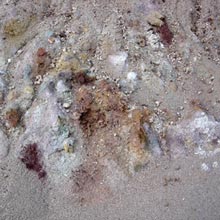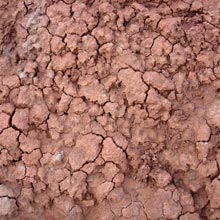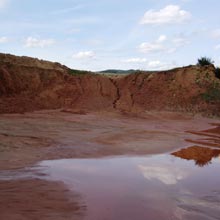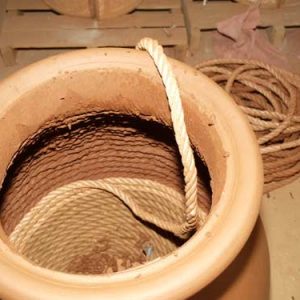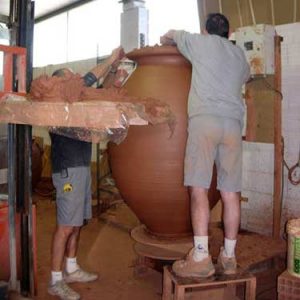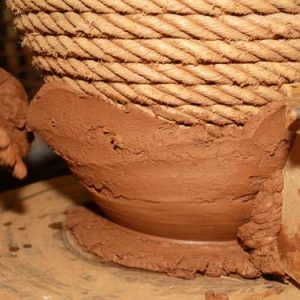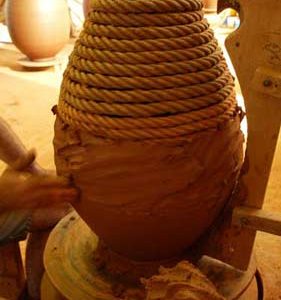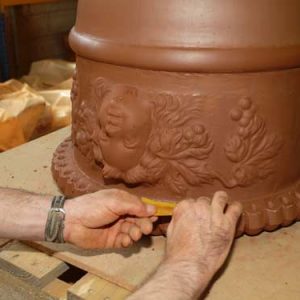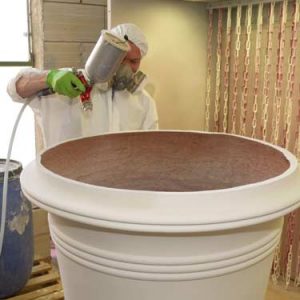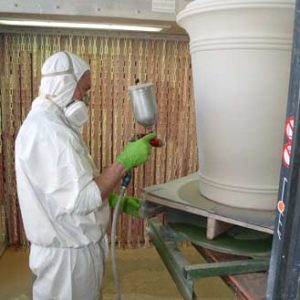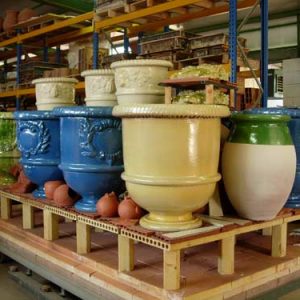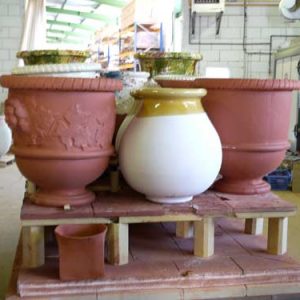Terres d’Albine : Craftwork and tradition since 1878
The clay
Since 1878, we have been using clay extracted from our own quarry, located 300 m from the brickworks. We usually run one quarrying per year: trucks are brought to extract the clay and store it under a shelter at the entrance of the quarry. The clay is then crushed and mixed with others materials, depending on the qualities and characteristics required.
Our processing techniques
Rope-turning « À la corde »
Products: Jars, amphora, Art Deco vases, contemporary vases and Roy Soleil pots.
An ancestral technique, “tournage à la corde”, dates, some say, back to ancient times, others say to the seventeenth century…
The jarre is formed by hand on the Wheel. Rope is wrapped around vertical wood staves to give the internal shape ans support the jarre during the drying. A profile cut-out to the external shape of the jarre is set up parallel to the core, and using this, the jarre can now be “counter-moulded”, applying the clay by hand, maintaining the correct thickness and the exterior form.
Stamping and decoration
Products: Languedocien vases
Some vases are made by stamping into plaster moulds. Clay is pressed into a mould that has been prepared in advance by the artisan. The plaster absorbs the humidity. The vase, as it dries, shrinks. It can be then removed from the mould and decorated.
The drying
Realized in a natural way, the manufacturing lead time varies (longer in winter).
The glazing
The glaze is produced in a powder form. We weigh the different raw materials, and then mix them with water. The technique used for applying the glaze, whether by brush, by laddle, by dipping or by spray gun, dépends on the product design.
The colors
We research our own colours and replicate the colours used to achieve identical renovation of historical monuments : “pastel”, “jaune Biot”, “cuivre”…
We test each colour dozens of times before it can be added to our colour chart.
The raw materials are precisely weighed, then each mix is noted in our record.
The “Essai” trial by fire. A glaze is only accepted once it has revealed its true colours after firing in the kiln.
The studio where we research our glazes is like an alchemist’s laboratory.
The firing
The pieces are left to dry for several weeks and are then placed in the kiln. They are subjected to a lengthy firing, which ensures taht they are long-lasting and frost proof. The firing is the most unpredictable stage of the production process. Despite all our experience and the very high quality of our clay it can happen that, when the kiln is opened, some pieces are maybe cracked or even broken… We have to start again!
This is when we use all our experience as ceramists – to work out the cause of the breakage or split in each particular case, in order to prevent it happening again in the next firing!
Finishes
It has been, and is, our ambition to offer finishes that reveal the richness of materials and colors of clays.
- Terre nue – Bare clay : A smooth finish- monochrome, graphite or red
- Terre brute – Rough clay : A textured mix of clay and gritty earth. Available in a chalk, brick or charcoal colour?
- Antique : This finish is applied after firing. It is a careful mix of different textures and clay colours to reveal in places the natural terracotta beneath.
The patina
Patina is one of our specialities. The majority of our designs are given a patina finish. They fit into the landscape without being obtrusive. Patina gives a traditional look both indoors or outside.
- Classique patina : The classique patina is our first patina – it has made our reputation. A skillful blend of colors and textures applied after firing gives the look of lichen.
- Prestige patina : Exclusively ceramic, the Prestige patina, applied before firing, is very hardwearing. Several years of research have been needed to perfect it. By working the material and the colours, we achieve a surface that evokes the quality of jarres handed downthrough the centuries.


